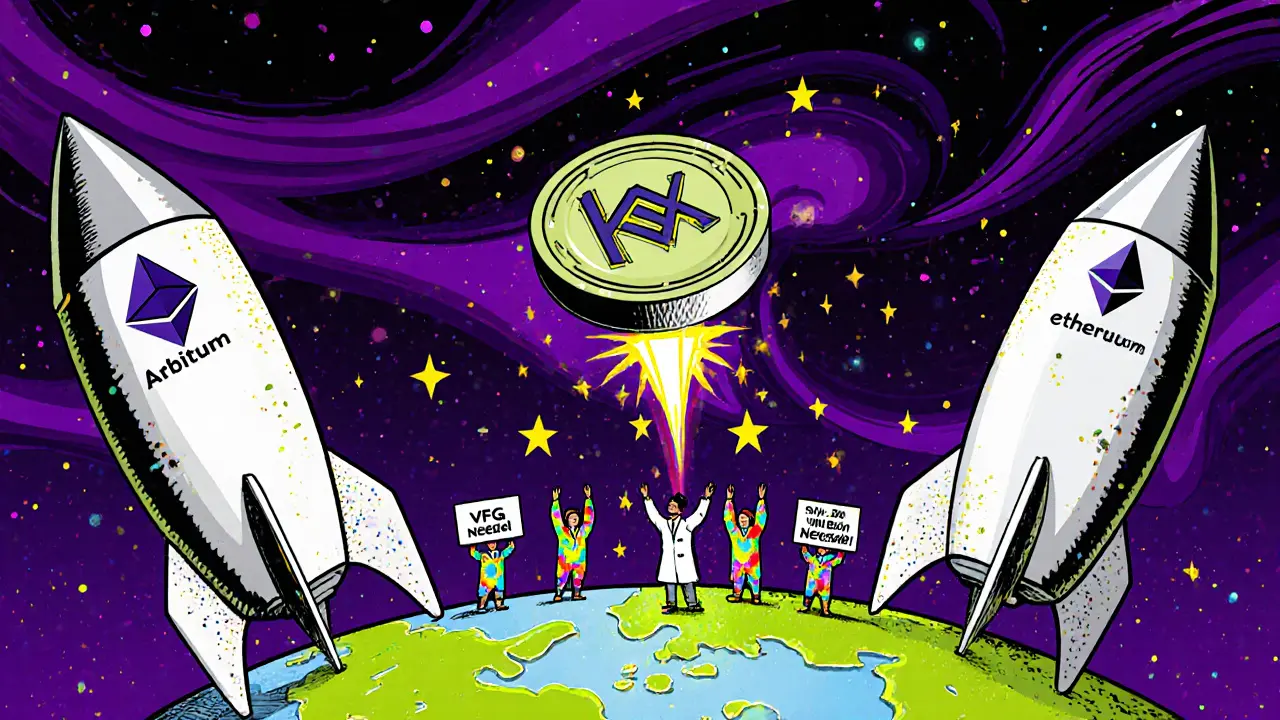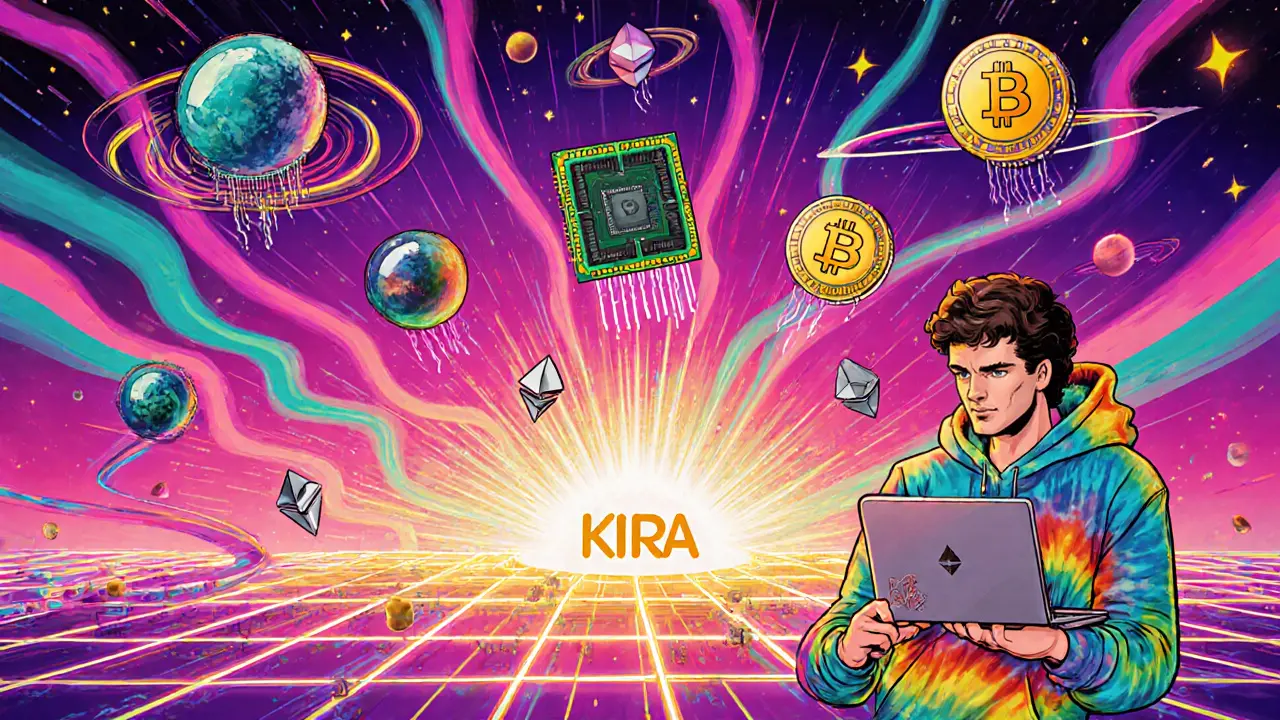KIRA Staking Calculator
KEX Staking Calculator
Estimate potential rewards from staking assets on KIRA Network using the Multi-Bonded Proof of Stake (MBPoS) system.
BTC
Bitcoin
ETH
Ethereum
USD
Stablecoins
NFT
NFTs
Estimated KEX Rewards:
0 KEX
$0.00 USD
Important Note: KEX price is highly volatile. Current KEX price: $0.0092 (as of Oct 2024). Actual rewards may vary significantly.
Most people think of cryptocurrencies as coins running on their own blockchain - Bitcoin on Bitcoin’s chain, Ethereum on Ethereum’s. But what if you didn’t need a blockchain at all to run a decentralized app? That’s the core idea behind KIRA (KEX), a crypto project trying to do something radically different.
What Exactly Is KIRA Network?
KIRA Network isn’t another Ethereum competitor or a Solana clone. It’s a blockchain-less Layer 2 infrastructure. That means it doesn’t force every app to run on its own separate chain. Instead, it gives developers the tools to build apps that run directly on top of a shared, secure layer - without needing to write smart contracts or manage their own validators. Think of it like renting computing power instead of building your own server farm. Developers pick exactly how much CPU, RAM, GPU, and storage they need. KIRA’s network delivers those resources from a decentralized pool of machines. No need to deploy a new blockchain. No need to bridge assets. Just plug in your app and go. This is powered by something called the Virtual Finality Gadget (VFG). It separates how an app runs from how its results are confirmed. On traditional blockchains, every transaction has to be processed and agreed on by the whole network. On KIRA, the app runs fast, and finality is handled separately - making it possible to build real-time apps like streaming platforms or high-frequency trading bots that would be too slow on regular chains.The KEX Token: What It Does
KEX is the native token of the KIRA Network. It’s not just a currency - it’s the fuel for the whole system. Here’s what it’s used for:- Staking to secure the network
- Paying for computational resources (CPU, RAM, etc.)
- Participating in governance - voting on upgrades and funding proposals
- Enabling Multi-Bonded Proof of Stake (MBPoS)
How KIRA Compares to Other Layer 2s
Most Layer 2 solutions - like Arbitrum, Optimism, or Polygon zkEVM - still rely on Ethereum as their base layer. They bundle transactions and post them back to Ethereum for finality. That means they inherit Ethereum’s security but also its congestion and fees. KIRA skips that entirely. It doesn’t connect to Ethereum. It doesn’t need bridges. It doesn’t rely on rollups. Instead, it uses its own consensus mechanism - built on Tendermint and Cosmos SDK - to create a shared security layer that any app can tap into. Here’s how it stacks up:| Feature | KIRA Network | Arbitrum / Optimism |
|---|---|---|
| Base Layer | Self-contained, blockchain-less | Ethereum |
| Smart Contracts Required? | No | Yes |
| Staking Assets | BTC, ETH, NFTs, stablecoins | ETH only |
| Resource Customization | Yes - CPU, RAM, GPU, I/O | No |
| Transaction Speed | High (VFG enables real-time execution) | Medium to high |
| Market Cap (Oct 2024) | $2.1 million | $1.5+ billion each |

Who’s Using KIRA Right Now?
As of late 2024, there are only 17 active decentralized applications on KIRA. Most are experimental DeFi tools - things like yield aggregators or token swaps that test the limits of the MBPoS system. No major DeFi protocols like Uniswap or Aave are live on it yet. Developers who’ve tried it say the architecture is powerful but hard to learn. If you’re used to Solidity and Ethereum, KIRA’s Cosmos SDK-based tools feel alien. Documentation is incomplete, and the learning curve is steep. Reddit users report spending weeks just to deploy a basic app. GitHub shows over 140 open issues. The most common complaints? Inconsistent resource allocation under load and unclear error messages. One developer wrote: “The idea is brilliant, but the tools feel like beta software.” The community is small but active. The official Discord has around 1,250 members. Support replies usually come within a day. That’s better than many obscure projects, but it’s nowhere near the scale of Ethereum’s 500,000+ member communities.Is KIRA a Good Investment?
As of October 2024, KEX was trading at around $0.0092. With a market cap of $2.1 million and daily trading volume under $800, it’s one of the smallest coins in the top 3,200. That makes it extremely volatile. If you’re looking for a safe bet? No. KIRA isn’t a replacement for Bitcoin or Ethereum. It’s a high-risk, high-speculation play. But if you believe the future of blockchain is modular, customizable, and asset-agnostic - then KIRA might be worth watching. Its idea of letting you stake anything to secure anything is genuinely new. If it can fix its developer experience and attract even a few big projects, the price could surge. Right now, it’s a moonshot. Not a mainstream coin. Not a blue chip. Just a clever, unproven experiment with a lot of technical ambition.
What’s Next for KIRA?
The roadmap is ambitious. Version 2.3.1, released in September 2024, cut resource overhead by over 22%. That’s a solid technical win. Upcoming updates include:- Integration with major liquid staking protocols (targeting Q1 2025)
- Cross-chain messaging to connect with other networks
- Enterprise SLA guarantees for resource reliability

Write a comment